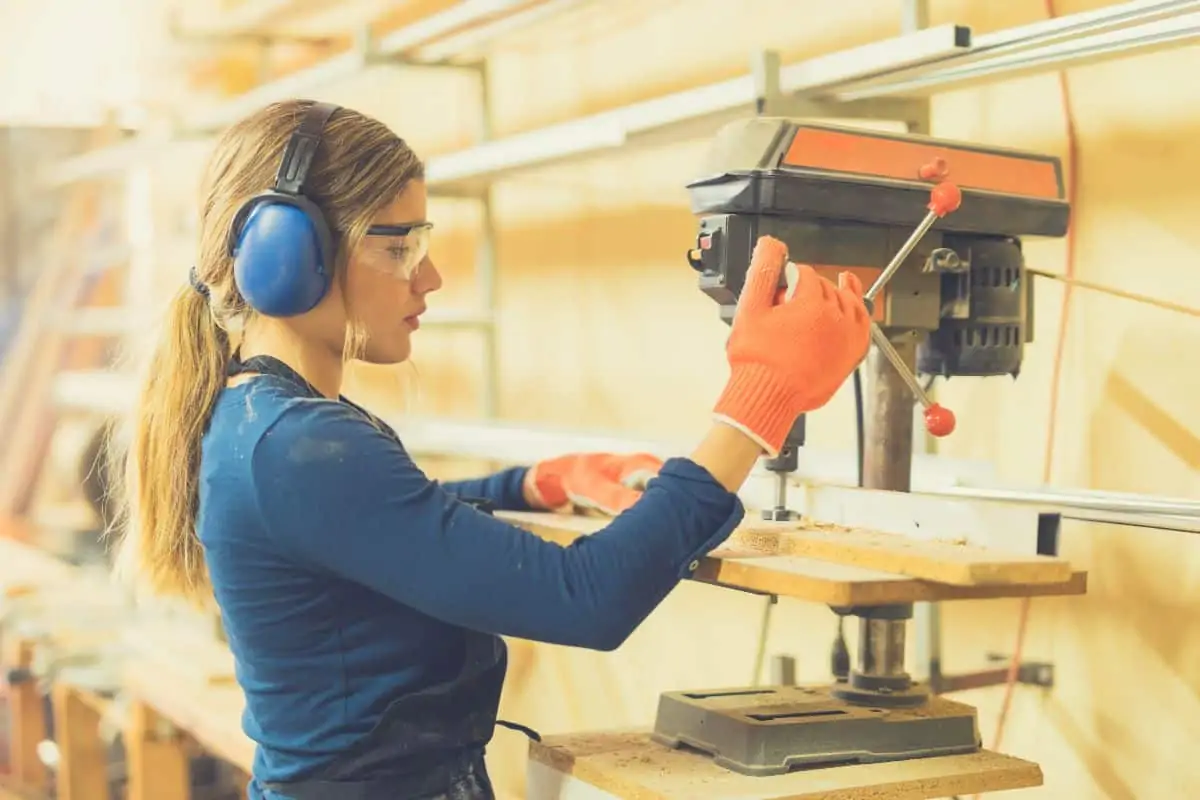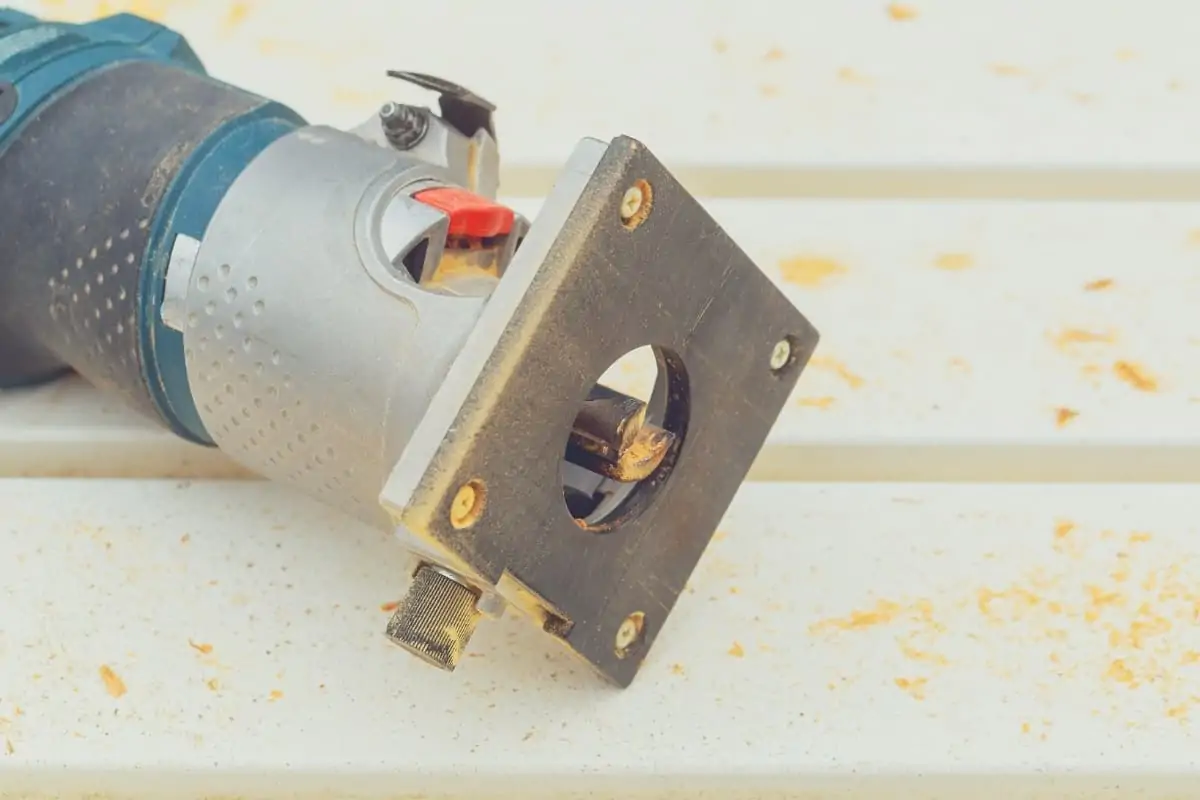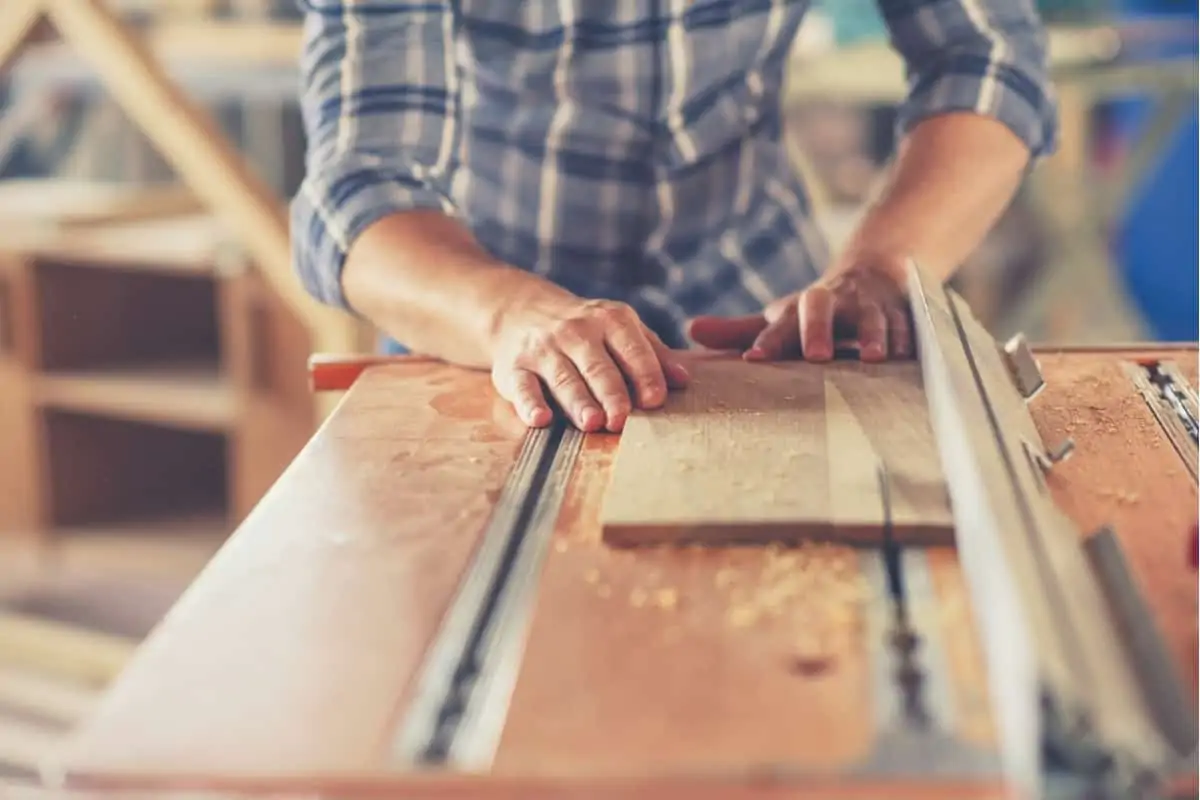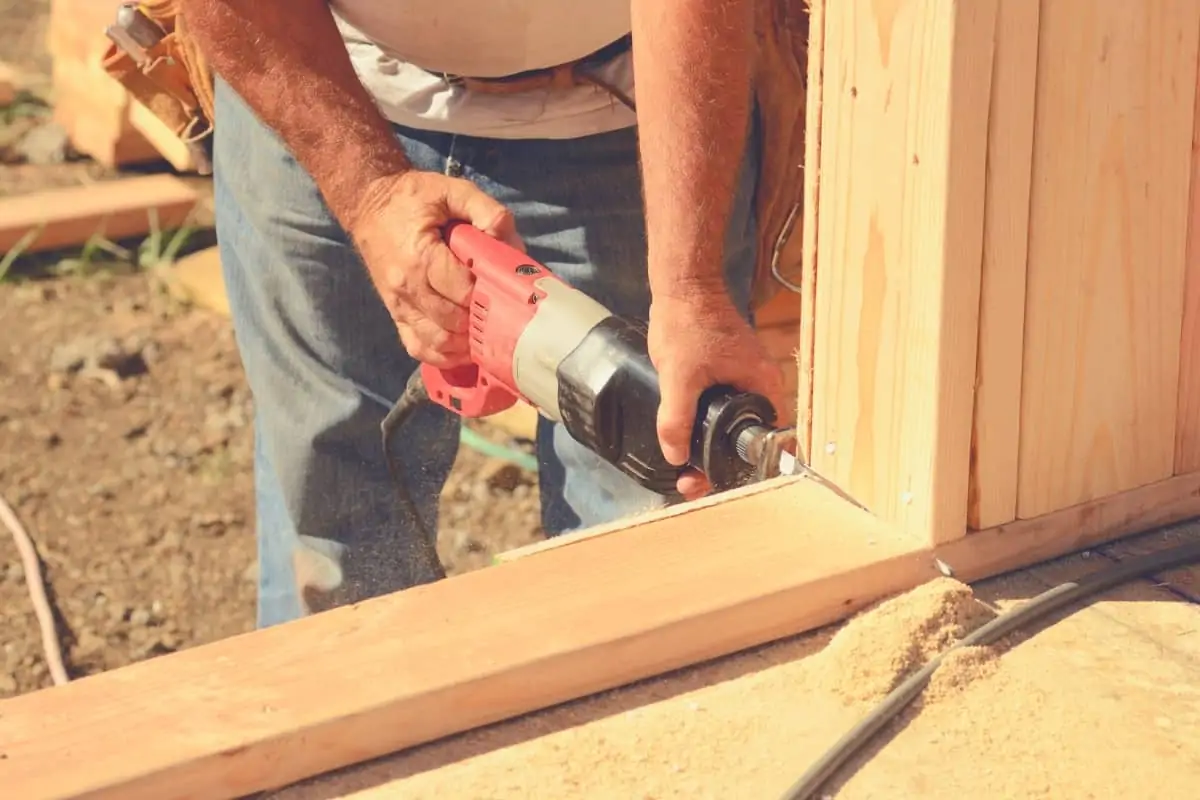In need of precise drilling for a project, I recently embarked on a journey to find the best benchtop drill press. Hand drills are useful, but they’re not the best when it comes to pinpoint accuracy. Where this is important a drill press is a better option. However full-sized presses are both expensive and take up a lot of shop room.
In this article I’ll show you some of my favorites and give you the down-low. Telling you what you need to know for finding the best benchtop drill press for your workshop.
My Top Picks for Best Benchtop Drill Press 2022
- Top Pick – JET J-2530 15-Inch 3/4-Horsepower 115-Volt Bench Model Drill Press
- Top Premium Pick – Jet 716200 JDP-15B 15 Bench Drill Press
- Top Budget Pick – WEN 4208 8 in. 5-Speed Drill Press
- Shop Fox W1668 Bench-top Drill Press
- WEN 4214 12-Inch Benchtop Drill Press
Top Pick – JET J-2530 15-Inch 3/4-Horsepower 115-Volt Bench Model Drill Press
For home use, the J-2530 seems to check off all the major boxes. ¾ HP is enough power for most applications, and the overall build quality is superb. There’s not much plastic on this one, which is great for those who are looking for a heavy duty unit.
The robust cast iron head is supported on top of a ground steel column. This drill press doesn’t feel like a modern piece of equipment, instead it feels like a tried and tested work horse. After all if it’s not broke, don’t fix it.
The table is easy to adjust sitting at a good 11.5”x11.5” dimensions so you have a fair bit of space to play with. The table also tilts upto 45 degrees which is really handy if you need to drill holes and an angle and don’t have a vice with angle adjustment.
It’s a pricey machine for those who are only going to use it occasionally, however. It also requires you to switch belt position between pulleys to alter the RPM. This is a bit of a pain for those who frequently work with different materials.
It’s still an amazing pick for the home handyman, however, and it’s even nice enough that it wouldn’t be out of place in a commercial shop.
| Speed Range | 200 - 3630 |
| Number of Speeds | 16 |
| Power | ¾ HP |
| Swing | 15 inch |
| Chuck | ⅝ inch keyed chuck |
| Item Weight | 157 lbs |
| Warranty | 2 year |
Pros
- Heavy duty design
- Few plastic parts
- Telescoping spindle guard
- Can be converted to 230V for commercial use
Cons
- Have to move belts to change speed
- Fairly expensive
Anyone who has a serious interest in woodworking should take a look at the listing, it’s a superb benchtop drill press overall.
Top Premium Pick – Jet 716200 JDP-15B 15 Bench Drill Press
If you’re looking for something even higher-end than my personal favorite, you may have found it here. This is a high-end tool, made for professional use and it shows. All of the praise I heaped on the J-2350 fits here, it just has even more to it.
Like the J-2350 the table has tilt adjustment of 45 degrees to the left and right. However the table is a fair bit larger coming in at 12 -1/2 x 17 inches. Ideal if you often find yourself working on slightly bigger jobs.
Changing speeds still requires moving the belt. However the whole process is quicker thanks to the one-handed belt tensioning system.
It also has a laser crosshair to help you line up the drill with your center marks. Perhaps not essential for experienced tradesmen but whoever you are it will save you time.
On top of the laser it also comes with a super bright LED worklight. Again not essential but it does really help reduce shadows when you’re trying to set up your work piece.
Other than being expensive, there aren’t many concerns with this machine.
All-in-all, this is a solid benchtop drill press that wouldn’t be out of place in most shops. However it may be overkill for occasional use.
| Speed Range | 210 - 3500 |
| Number of Speeds | 16 |
| Power | ¾ HP |
| Swing | 15 inch |
| Chuck | ⅝ inch keyed chuck |
| Item Weight | 154 lbs |
| Warranty | 5 year |
Pros
- One-handed belt tensioning for fast speed changes
- Laser guide and work light
- Very heavy duty
- Safety key and paddle switch
- 5 year warranty
Cons
- Expensive
- No variable speed control
For those who need a professional level drill press for their shop, it’s hard to find one better. Take a look for yourself!
Top Budget Pick – WEN 4208 8 in. 5-Speed Drill Press
Just need to punch some holes in wood? Then you’re in luck. The WEN 4208 is one of the best-priced benchtop drill presses I’ve ever seen, but that lower cost does come with some limitations.
It has a ⅓ HP motor, with 5 speed settings. It also has a small worktable at 6 ½” by 6 ½”. It also has a bevel adjustment for the worktable, along with a sturdy depth stop. All of that gives a great deal of versatility from such a reasonably priced compact unit.
Unfortunately, it’s low price may be too good to be true for anything but light work. Like most WEN products it has features but the longevity of the machine is questionable. This is the wrong choice for daily use, or really anything other than the occasional job.
It’s not short on extra features, or core functionality if you’re primarily cutting soft stuff. For the occasional home DIY use however, you’re not going to be able to get more for your dollar.
| Speed Range | 740 - 3140 |
| Number of Speeds | 5 |
| Power | ⅓ HP |
| Swing | 8 inch |
| Chuck | ½ inch keyed chuck |
| Item Weight | 34.2 lbs |
| Warranty | 2 year |
Pros
- Great price
- Decent depth stop
- Solid base and worktable
- Runs smooth
- Light weight
Cons
- Light duty only
- A bit underpowered
For those looking for a cheap tabletop drill press to get the job done, this may be your best option. Take a look at the online product listing to decide if it’s right for your setup.
Shop Fox W1668 Bench-top Drill Press
The W1668 is a solid choice for a home shop with its heavy duty cast iron head and base . Straddling the edge between consumer and professional quality quite nicely. It’s got a ¾ HP motor and a table which is easily beveled to 90 degrees to the left and right.
What is awesome for the home DIYer is the oscillating spindle sander. It’s easily converted from drilling to sanding function by simply installing an additional belt. Then simply fit the sanding drum, rotate the table to line up the clearance hole with the drum.
A lot of tools that are marketed as 2 in 1 tend to compromise at least one of the functions. This definitely isn’t the case with the Shop Fox, this truly is a dual function machine.
Shop Fox offers great prices for their tools, but this one also suffers from the usual problems with the company. Namely, quality control and packaging can be hit or miss.
It’s also a bit of a pain to change the belt position for RPM adjustment since it lacks a lever to remove the tension. It’s not a deal breaker for me as it’s easy enough to slide the motor without a lever, it just could be better.
Other than that, this is a solid machine with a great price compared to other presses on the market. The extra versatility is also welcome in any home shop, especially if you’re short on space.
| Speed Range | 250 - 3050 |
| Number of Speeds | 12 |
| Power | ¾ HP |
| Swing | 13 inch |
| Chuck | ⅝ inch keyed chuck |
| Item Weight | 130 lbs |
| Warranty | 2 year |
Pros
- Well built
- Excellent worktable
- Easy to use for spindle sanding
Cons
- Packaging can be hit or miss
- Speed changes are a pain
Still, the minor downsides are relatively easy to overlook at this price, so take a look!
WEN 4214 12-Inch Benchtop Drill Press
For the home craftsman who values convenience, I’d like to show you the WEN 4214 12 inch drill press. It’s a ⅔ HP motor with a variable speed control.
The control is the main reason it’s on the list, it lets you change speed quickly. Ideal for a home shop where you need to switch speeds for whatever job or material you’re working with that day.
An LED readout shows the running speed so as well as being easy to adjust, it’s also easy to keep an eye on what speed you’re running at.
It’s not short on other features either. It has a laser guide and a worklight, perfect for quick accurate set up every time.
The worktable comes with extendable supports and can be adjusted to bevel left and right as well as rotate about the center of the table. This is really handy as you might not need to unclamp your workplace every time you need to change its position.
The downsides? WEN customer service is notoriously lacking. I’ve not had first hand experience myself but this is something I hear about quite often.
All-in-all, this is a perfect shop press for woodworkers, and it’s available at a great price.
| Speed Range | 580 - 3200 |
| Number of Speeds | Variable |
| Power | ⅔ HP |
| Swing | 12 inch |
| Chuck | ⅝ inch keyed chuck |
| Item Weight | 85 lbs |
| Warranty | 2 year |
Pros
- Laser guide and work light
- Variable speed controls
- Runs smooth
- Moderate price
Cons
- WEN customer service could be better
For amateur woodworkers looking for a solid drill press… well, take a closer look!
What to Look for When Choosing the Best Benchtop Drill Press
Finding the right press is simply a matter considering what you’ll need to use it for. While all presses should be extremely accurate, the rest is really up to the user’s needs. Check the following out before you start pulling out your card.
Power
The best indication of how powerful any individual drill press will be is horsepower. Horsepower ratings will trump most other considerations, especially if you don’t need one that’s highly specialized.
RPM is another consideration. While both the input power and RPM affect torque, higher RPMs may not be necessary depending on the workpiece. In particular, you’ll want to use a slower drill when you’re going through metals, hardwoods or using larger forstner bits.
The equations get more complex when you begin to allow for things like the drivetrain from the motor. For the non-engineer, just use the horsepower rating of the press’ motor for a rough power estimate.
Speed Range & Control
RPM varies a lot in drilling operations. For most people, a range from 300-3000RPM is ideal.
Hard and “sticky” materials like steel or non-ferrous metals are cut at low speeds, for instance. You’d tend to use much higher speeds for wood.
Making things even more complex – different thicknesses require different speeds. You can find a guide online easily enough, but even then you may need to improvise.
There are two ways that the speed of a drill press can be changed.
One has variable speed adjustment, which can be changed at the front of the machine. These are quick and much more user-friendly than the alternative but rarely found. They’re also a failure point in many cases, but a good VFD is still an option.
In most cases, you’ll have to actually open the machine to change the speed. This is done by moving the belt between a series of different pulley diameters. This might sound complicated but it’s actually not too bad. The inside of the cover will normally have a reference table. This will show you which combination of pulleys you need for a certain speed.
It’s worth noting however, the speeds are infinitely adjustable, they’re all predetermined by the ratio of the pulleys.
These are generally considered to be more robust. But they’re a major pain when you need to switch materials frequently since you have to change belt configurations.
If the latter sounds like too much work to you, then you may be limited in your choices.
Swing
The swing of a drill press is twice the the distance from the center of the spindle to the closest outside edge of the column.
It generally gives you an idea of the maximum width of the material you’ll be able to drill a hole in the center of. For example a drill with an 8 inch swing would enable you to drill a hole in the center of an 8 inch board.
Generally a bigger drill will have a bigger swing. So when considering what swing you need you’ll need to think about what’s likely to be the widest material you’re going to want to dill. You’ll then need to make sure you check the overall dimensions of the drill against the space you have available in your shop.
Swing sizes will vary from model to model however generally they range between 8 and 20 inches.
When you see a drill press referred to as a 10 inch drill press in the description, this will be referring to the swing.
Spindle Travel
Spindle travel is basically the total distance the rotating spindle can travel from it’s fully up position to the bottom when the crank is rotated to it maximum.
It’s basically the maximum distance you can drill a hole through a piece of material.
Similar to swing, larger spindle travel will generally mean a bigger overall package size. Which one is best for you will depend on the depth of the holes you’ll need to drill and the space you have available.
The Chuck
A good quality chuck can make a big difference, at least if you’re planning on doing a wide array of work with your press.
They come in a few varieties, but the standard uses a special wrench called a chuck key to tighten the jaws of the chuck after being hand-tightened. The high clamping force you get ensures the drill bit won’t slip, even when drilling through tough materials.
Keyless chucks can be found for presses, but don’t maintain the same grip. They’re best for drilling softer materials in most cases.
If you really need a keyless chuck you’re not out of luck. They can be found aftermarket and installed after you’ve got the press. That said, a good keyless chuck can cost more than a mid-priced drill press so it’s a good thing to look for before you drop the money.
You should also check the minimum size of the chuck. Not all close flush, so you wouldn’t be able to hold a 1/16” bit in a ⅛” minimum size chuck.
Worktable Size & Adjustment
The work table ensures you have a sturdy platform to secure your workpiece. Some also have a range of adjustments allowing you to maneuver the workpiece between drilling. You should consider it carefully, since larger pieces may require special accommodations with a small work table.
Benchtop drill presses are often used for smaller projects, where this isn’t a primary consideration. If you think you’ll need it, then make sure it can accommodate the pieces you’re planning to drill. If the pieces are still too big then you may need to rig something yourself.
Many good drill presses are able to tilt the worktable, which allows you to easily make angled holes.
Ideally, you’ll be able to smoothly move the worktable through 45 degrees or more on each side, some even go as far as 90 degrees.
Weight
The weight doesn’t matter much with a drill press. You’re unlikely to be toting one around a job site after all.
It does matter for those who don’t have enough bench space to keep their tool permanently placed.
Their design makes them heavyweight no matter what. Typically the heads and bases are made from cast iron to give rigidity and reduce vibration. For those who will need to move it often, you might need to compromise on the overall size as this is the only real way to reduce weight.
Regardless of the weight… you’re probably going to want a friend to help you set things up. Drill presses really aren’t portable and even assembling them can be a two-man job.
Safety Features
Drill presses can be dangerous, but most of the problems associated with their use can be chalked up to operator error. Bad judgment is the leading cause of injuries where a drill press is concerned.
Most presses lack a safety switch, instead, they rely on an on/off switch during operation. They can be nice but they’re not a replacement for good practices in the shop. You should still look for a shutter over the switch, to prevent accidentally turning the machine on at the wrong time.
The other safety feature which can be found are plastic guards that fit over the chuck. They’re designed so that the operator can’t come in contact with the spinning drill bit easily, avoiding some risk of injury.
If this is your first time using a drill press you should read up on best practices before you get going.
Additional Features to Look For
Drill presses are simple machines, but there are a few extra features that can help out but don’t come standard in many cases.
A laser guide allows for more rapid set up, although not necessarily more precision. To line up a center mark, normally you would have to work the crank and bring the drill bit down. Aligning the drill when it’s almost in contact with the material while the machine is off. Once positioned, you can clamp the workpiece and then bring it down while it’s on.
Lasers make it easier to see where the drill bit will be when you bring it down. The time saving isn’t huge but if you’re drilling a lot of holes it all adds up.
Work lights are another feature that many people find useful. A simple one can help you use your press in dim conditions, which is essential for precise work. Ideally, it will light the entire table brightly, while being positioned so the pressing action doesn’t get in the way of the light.
The other major feature to look for is a depth-stop. These will let you get a precise measurement of how deep you’re going, which is essential for tasks like dowel joinery.
Keep in mind that drill presses aren’t made for side-to-side motion. People will occasionally use them for very light milling but it’s not a great idea. Some do come with attachments to make things like sanding much easier, however.
Warranty
Like any tool, you’ll want to know what sort of warranty you have.
Each manufacturer is different, but unlike smaller hand tools you aren’t always stuck with a limited warranty that only covers a few things.
Take a look if you’ve got two choices neck-and-neck, but otherwise, most manufacturers stand behind their presses to a decent extent. Roughly two years seems to be normal for these tools.
Some companies aren’t great in the customer service department either. That’s unfortunate, but most mechanically inclined people will be able to do minor repairs themselves if the company won’t answer your calls.
Conclusion
A good benchtop drill press is a must for serious home fabrication, but choosing the right one isn’t always so easy. Take your time and make sure that you’ve got the space, power, and amenities you require, it’s easy to pick a drill press based on your own needs.
So, isn’t it time to start drilling?








